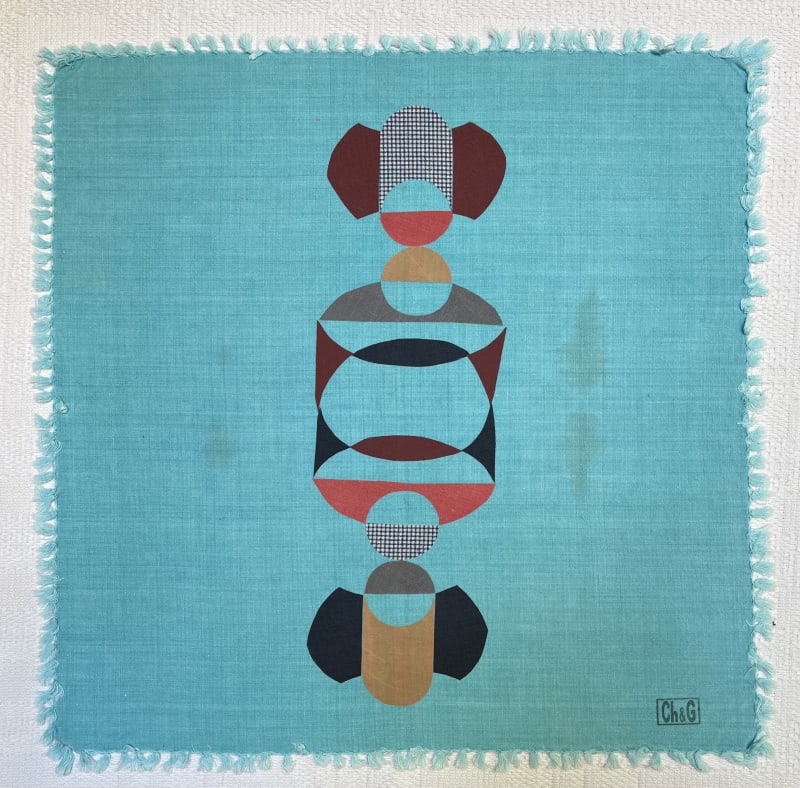The Memory of Fabric
“The masculine subject only appears to originate meanings and thereby to signify. His seemingly self-grounded autonomy attempts to conceal the repression which is both its ground and the perpetual possibility of its own ungrounding”.[1]
Judith Butler
The artistic practice of the Argentinean duo Chiachio & Giannone, composed by Leo Chiachio and Daniel Giannone – a couple in life and art –, since its beginnings in 2003, has focused on blurring the sex/gender barriers and roles in society and their different ramifications, from the conception of the family to art. Thus, the duo of painters decided to leave the brushes and oil paint to start experimenting with textiles, threads and needles, subverting the meanings and signifiers of these materialities.
In Genio Doméstico – their first exhibition in Chile, hosted by Isabel Croxatto Galería in 2019 –, Chiachio & Giannone presented the different notions of family that can arise from a couple of gay men through hand-embroideries of self-portraits with their children-pets – three Dachshund dogs – in the style of early 20th-century family portraits. The duo also paid tribute to female artists who have been semi-forgotten by history precisely because they were women, reusing textiles handed over by family and friends, giving them a second life as works of art. This way, they questioned the historical pigeonholing of textile art, usually associated by the world of high culture with crafts and the feminine.
Barbas y Bigotes follows that subversion, taking a turn towards exploring what it means to be men and the deconstruction of masculinity. After all, despite being active members of the LGBTQIA+ community, Leo and Daniel are still men.
But what is it to be men? Drawing on Simone De Beauvoir's premise in The Second Sex, the American philosopher Judith Butler states: "Masculine and feminine roles are not biologically fixed but socially constructed".
[2] And as such, masculinity is also susceptible to being affected by time and social-historical changes. In the 21st century, the demand for women's and sexual diversities/dissidences' rights have taken centre stage in the face of a harsh conservative response that clings to "the traditional". From the
#MeToo movement to the growing liberation of the
hijab in the Islamic world – as the recent protests in Iran against patriarchal-ecclesiastic subjugation glimpse – and the "new" ways of making family, what it meant to be "man" in previous generations is not or will not remain the same.
In Barbas y Bigotes, Chiachio & Giannone recover men's handkerchiefs that belonged to their fathers and friends, which have fallen into disuse due to the culture of the disposable and changes in fashion and customs. They represent the deconstruction of a masculinity that is in the process of becoming obsolete to forge new notions of being a man, shedding light on the traditional model of masculinity while at the same time tracing links and affective networks of sociability.
Furthermore, the artists work on the idea of rethinking what new masculinities are like and how these are expressed, overturning the macho notion that has historically permeated the gay community as well, in which the feminine is looked down upon and the masculine and desirable approaches the stereotype of the bearded "hunk" dressed in leather and riding motorbikes.
Instead of resorting to embroidery, this time Leo and Daniel take and cut fabric scraps that will later give rise to mosaics or textile collages on old male handkerchiefs, avoiding any reference to the imitation of nature by employing the representation of a visual universe populated by pure geometric shapes. For them, this deconstruction is an exercise in starting to question, as men, the norms that they absorbed into their lives based on the hegemonic masculinity they seek to erode and blur. The act of cutting and gluing is an attempt – at times psychomagical, perhaps – to break with what was instilled in them as masculine during their childhood and adolescence, freeing themselves from the heteronormative patriarchal impact.
The fabric keeps the marks and traumas of life. It doesn't matter how much it is ironed or stretched; the old handkerchief keeps its folds. These folds bear witness to the passage of time. Deconstruction is not an immediate process: on the contrary, it is slow and always unfinished. Like our psyches and our bodies, the fabric has a memory.
"It is not about renouncing our masculinity, let alone our identity. We are who we learned to be, and we don't know how to be any other way", the artists say. "It is necessary to re-signify what it means to be a man, to stress the limits of this cast called masculinity and to charge it with new meanings. Taking on rethinking our masculinity and revising all those rules we have learned should be an ethical imperative for all of us. It is an urgent demand and an opportunity to live a little freer".
Nicolás de Sarmiento, journalist and artist.
November 2022.
[1] Butler, J. (1990). Gender Trouble: Feminism and the Subversion of Identity. Routledge: New York.

